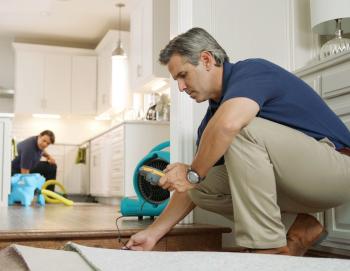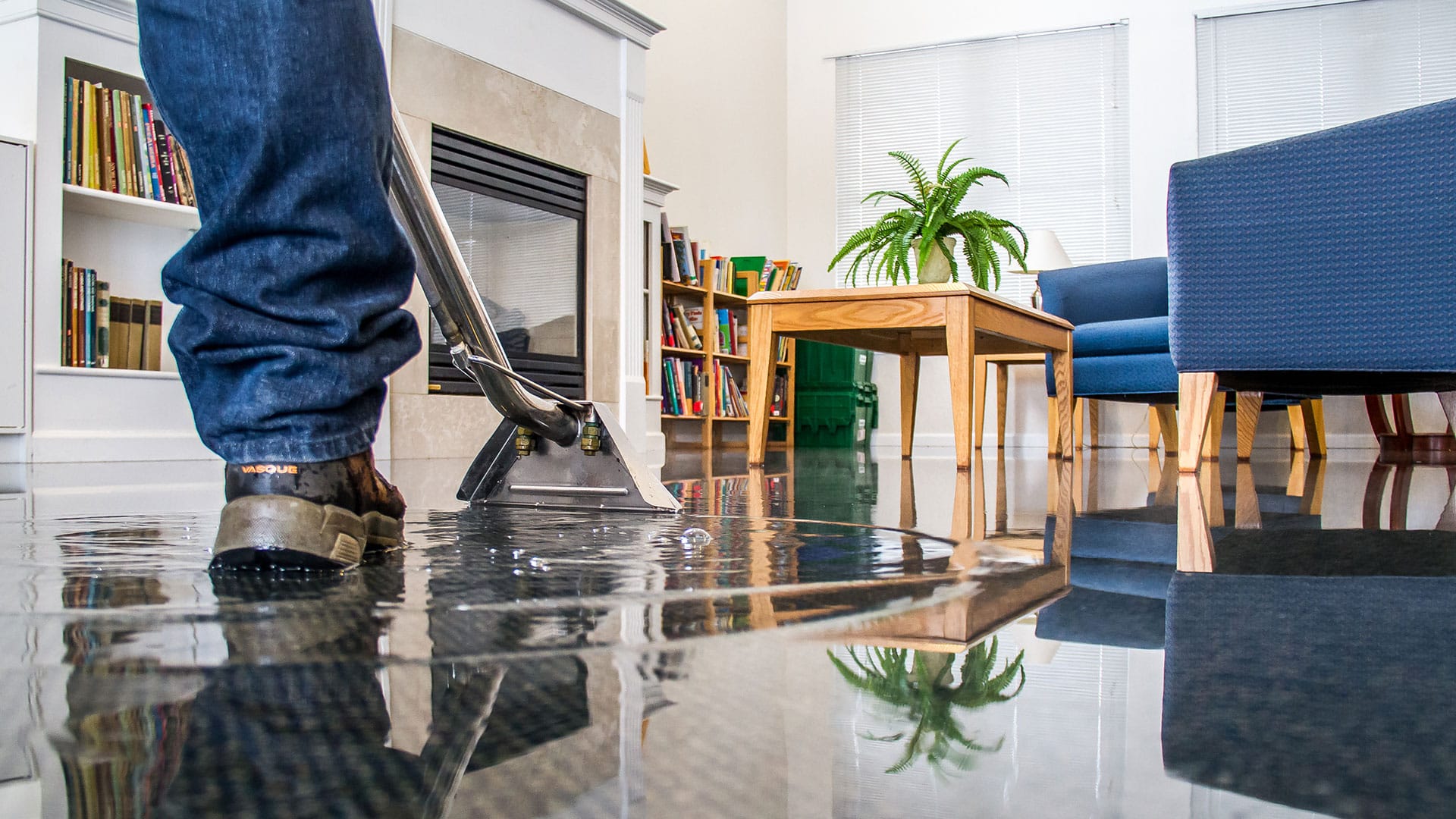Why professional Flood Cleanup Services make a difference after major flooding
Wiki Article
Water Damage Restoration 101: Understanding the Process and Cost
Water damage can strike suddenly, leaving house owners in a state of confusion. Understanding the remediation process is vital for reliable recovery. From reviewing the damage to choosing the right solution copyright, each action affects the overall outcome and price. Elements such as the sort of water damage and urgency likewise play a considerable duty. What are the details strategies used in remediation, and exactly how can one plan for possible expenditures?Kinds Of Water Damage

Preliminary Assessment and Inspection

Water Extraction Strategies
Adhering to the initial assessment, effective water extraction techniques are utilized to minimize damage and prevent more issues. These methods involve the use of specific devices such as industrial-grade vacuums and completely submersible pumps - Water Damage Restoration. The selection of technique depends on the quantity of water existing and the sort of products affected. For standing water, completely submersible pumps are commonly utilized for rapid elimination, while vacuums are ideal for removing water from carpetings and upholstery. Additionally, advanced methods like water removal floor coverings might be utilized for hard-to-reach areas - Water Damage Restoration. The goal is to eliminate as much water as possible, decreasing the capacity for mold and mildew development and architectural damage. Motivate and effective water extraction is important in the total water damage restoration procedureDrying Out and Dehumidification Process
As soon as the water extraction is full, the drying and dehumidification process becomes essential to bring back the affected location. This phase typically utilizes industrial-grade dehumidifiers and air moving companies to successfully decrease wetness levels. The dehumidifiers attract in damp air, eliminating excess moisture, while air movers circulate air to accelerate evaporation. Surveillance devices is frequently utilized to track humidity and temperature level levels, making certain suitable drying problems. The duration of this procedure can differ depending upon the degree of the water damage and ecological aspects. It is necessary to completely completely dry all affected products, including wall surfaces, flooring, and home furnishings, to avoid mold growth and structural damage. Proper execution of this step is essential for an effective restoration outcome.Cleaning Up and Sterilizing Affected Areas
As soon as the drying out process is complete, a comprehensive preliminary analysis and assessment of impacted areas is crucial to recognize contamination degrees. Effective cleansing techniques and suitable products must after that be used to get rid of particles and stains. Sanitization and disinfection methods are vital to guarantee that hazardous virus are removed, bring back the space to a safe condition.Preliminary Analysis and Examination
Before starting any type of repair initiatives, a complete preliminary evaluation and assessment of the affected locations are crucial for effective cleaning and disinfecting. This process involves recognizing the level of water damage, establishing the source of the water intrusion, and evaluating the products impacted. Assessors commonly search for indicators of mold and mildew growth, structural honesty concerns, and harmed possessions. The assessment also includes checking dampness levels using specific devices to guarantee no concealed water pockets continue to be, as these can lead to more issues. Recording the findings is important for preparing the following actions in the reconstruction process. A detailed initial assessment allows remediation experts to develop a targeted technique for efficient cleaning and disinfecting, eventually decreasing damage and wellness risks.Cleansing Methods and Products
Effective cleansing and sanitizing of water-damaged areas require a selection of techniques and items customized to the details materials influenced. For permeable surfaces like drywall and carpets, removal methods are necessary to remove excess moisture, adhered to by deep cleansing with specialized cleaning agents. Non-porous materials such as ceramic tile or metal can be cleaned up making use of commercial-grade cleaners that effectively get rid of impurities. Vapor cleaning is another efficient strategy, especially for rugs and furniture, as it makes use of heats to eliminate germs and mold (Flood Cleanup Services). Furthermore, eco-friendly products are significantly prominent for their safety and efficiency - Flood Cleanup Services. Ultimately, selecting the suitable cleaning methods and items not just guarantees instant sanitation however likewise help in avoiding additional damage and wellness dangers related to water invasionSanitization and Disinfection Approaches
When addressing water damage, proper sanitization and sanitation methods are vital to assure the security and health and wellness of the damaged atmosphere. After initial cleaning, surfaces should be treated with ideal disinfectants to eliminate virus, mold, and germs that flourish in wet problems. Common techniques include making use of EPA-approved chemical disinfectants, which can be applied via spraying or wiping techniques. Furthermore, ultraviolet (UV) light systems can effectively sterilize areas by counteracting bacteria without rough chemicals. The option of method often depends upon the sort of products influenced and the degree of contamination. Eventually, extensive sanitization not only recovers a safe home yet also assists protect against future health and wellness dangers associated with remaining dampness and mold and mildew growth.
Repair Services and Restoration Options
Reviewing the damage created by water direct exposure is crucial for figuring out the appropriate repair work and remediation choices. Property owners may encounter different concerns, including harmed drywall, deformed floor covering, and compromised structural elements. Depending on the extent of the damage, repairs may include replacing sections of drywall, mounting new flooring, or reinforcing architectural beams. In cases of extreme damage, full substitute of afflicted materials could be required. Furthermore, professional restorers frequently suggest making use of dampness meters to assess covert dampness degrees before selecting the very best training course of activity. It is necessary to act without delay to protect against mold and mildew development and more damage. Picking the appropriate options not only brings back the home yet additionally assures lasting safety and functionality.Variables Influencing Restoration Expenses

The extent of water damage directly influences the remediation sets you back home owners can anticipate to sustain. Elements such as the resource of the water, check here the duration of exposure, and the affected materials significantly influence prices. Tidy water damage from a broken pipeline is typically much less pricey to recover compared to damage created by sewer. In addition, the level of contamination determines the need for specialized cleansing and disposal solutions, better increasing expenses. Geographical area also plays a function, as local labor prices and availability of reconstruction services can vary. The seriousness of the action affects prices; quicker treatments usually lead to reduce general expenditures by avoiding further damage. Comprehending these aspects is important for property owners when estimating repair prices.
The 3 primary types of water damage are categorized based on contamination degrees: tidy water, grey water, and black water. A detailed first analysis and evaluation are vital actions in the water damage reconstruction procedure. For standing water, submersible pumps are generally made use of for quick removal, while vacuum cleaners are ideal for removing water from carpets and furniture. The level of water damage straight affects the remediation costs property owners can anticipate to sustain. Clean water damage from a damaged pipe is usually less expensive to bring back contrasted to damage triggered by sewage.
Report this wiki page